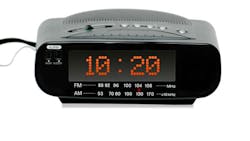LEDs have been around for many years in digital clocks, Christmas lights, flashlights, and traffic signals. But they only took off as generic lighting following the technological revolution of the 1990s and the advances of semiconductors.
An LED is a semiconductor light source. Electrons recombine with electron holes within the device, releasing energy in the form of photons. This effect is called electroluminescence, which was discovered as a phenomenon in 1907 by a British scientist working for Marconi Labs. The Russians reported creation of the first LED in 1927, but no practical use was made of the discovery for several decades.
In 1961, American experimenters working at Texas Instruments applied for and received the patent for the infrared LED. Hewlett Packard introduced red LEDs in 1968 that were bright enough only for use as indicators on calculators and equipment. Gradually, other colors became available. As LED materials technology grew more advanced, light output rose, leading to the invention and development of the high-power white-light LEDs that we know today. With rising power output, it has grown increasingly necessary to shed excess heat to maintain reliability, and more complex packages have been adapted to do so. Packages for state of the art high-power LEDs now bear little resemblance to early LEDs.
LED lighting has applications in transport on planes, buses, and trains as well as in buildings. In safety-critical environments, the new technology’s durability means added reliability. The London Underground, the world’s oldest underground railway, is rolling out LED lighting on its carriages and on new stock on the Thames Link. Airbus has used LED lighting in its A320 Enhanced since 2007, and it is a star feature of Boeing’s state of the art 787 Dreamliner. The 787’s cabin has LEDs as standard equipment, allowing the aircraft to be entirely “bulbless.” The system is based on three-color plus white LEDs instead of fluorescent tubes, allowing any color and brightness.
About the Author
Antony Corrie
Vice President, Harvard Engineering Americas
Antony Corrie is the vice president of Harvard Engineering Americas. He joined Harvardto set up its Americas division in August 2012. Previously, he was regional vice president for Southern California at Future Electronics, where he grew sales to more than $100 million annually and managed 50 people.
